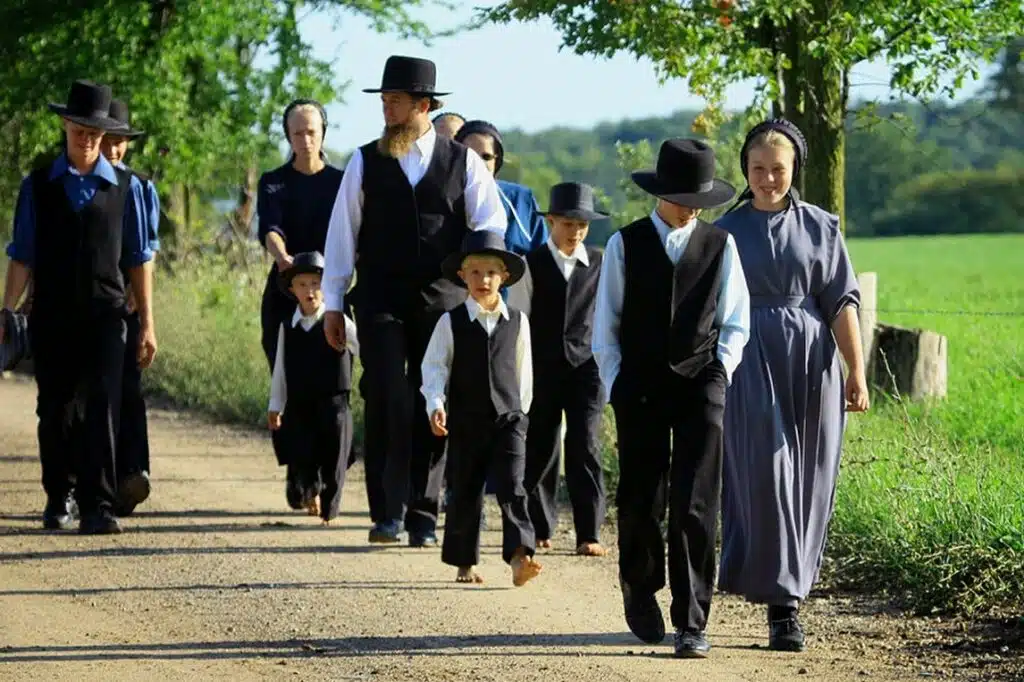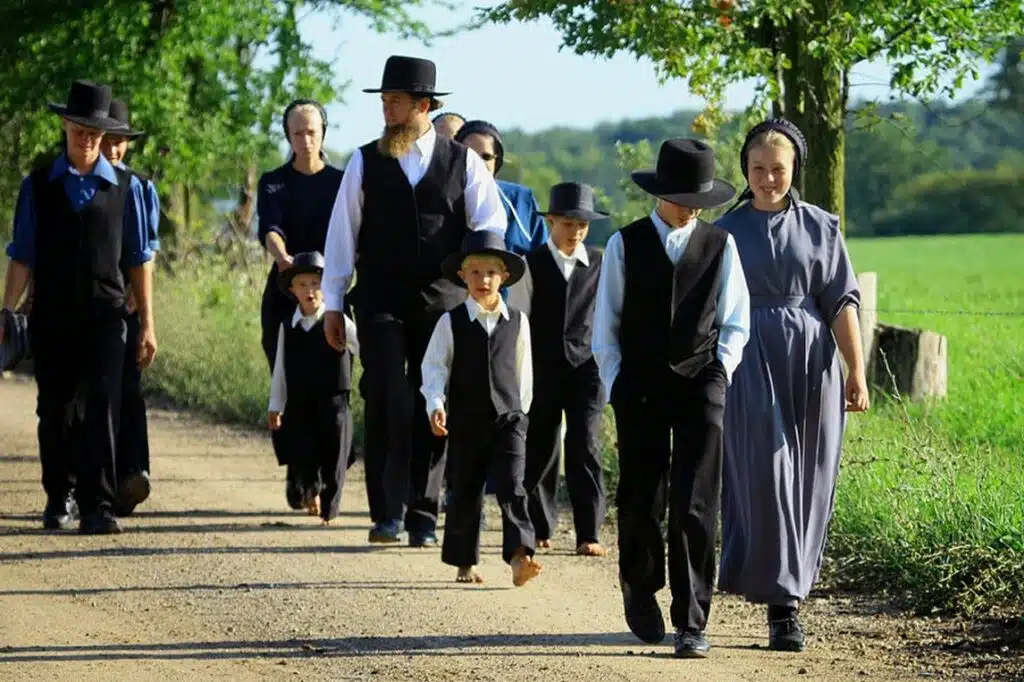
Georgia’s landscape, steeped in history and cultural richness, once attracted Amish settlers seeking a peaceful life. While attempts were made to establish communities in the early 1900s, unlike other regions, these settlements haven’t flourished long-term. However, the story of the Amish in Georgia is a captivating one.
Key Takeaways
- The first Amish settlement in Georgia began in Pulaski County around 1912, with subsequent communities, like the Beachy Amish Mennonites in Montezuma, establishing themselves more sustainably over time.
- The Amish and Mennonite populations significantly contribute to Georgia’s diversity and economy, particularly through high-quality, organic agricultural products and handmade crafts.
- These communities attract tourists interested in their traditional lifestyles, which bolsters local economies through purchases of Amish-made goods and participation in activities like farm tours and buggy rides.
This article provides a comprehensive overview of their enduring presence in the Peach State. Whether you’re intrigued by their agricultural practices, craftsmanship, or the principles guiding their way of life, the Amish communities in Georgia present a compelling story of resilience and dedication to tradition.
The First Amish and Mennonite Settlements in Georgia

One of Georgia’s first known Amish settlements took root in Pulaski County around 1912. Like many others during that era, this community struggled to adjust to a new environment and maintain its traditions.
The harsh realities of farming in unfamiliar land and economic pressures eventually led to the dissolution of this early Amish colony. However, it set a precedent, and several other groups soon followed.
In 1953, a group of Beachy Amish Mennonites from Virginia established themselves near Montezuma in Macon County. Named after Moses M. Beachy, their first bishop, this sect has survived and thrived, maintaining a vibrant community.
Each learned from the past and slowly built a more sustainable foundation in their new southern home.
Mennonite communities established themselves more firmly in Pulaski County, Georgia, in 1912. Unlike the Amish, Mennonites generally accept a more comprehensive range of technologies.
“Mainstream society’s perceptions of traditional Mennonites tend towards viewing them as technologically deficient. Yet, cell phones, computers, and tablets are increasingly prevalent within this population.“, as published by Kira Turner for Living on the Edge: Old Colony Mennonites and Digital Technology Usage.
Moreover, the Mennonites are often more integrated with the local economies. This adaptability has allowed them to thrive in areas such as Montezuma and Macon, where they contribute significantly to local agriculture and industry.
The Beachy Amish Mennonite Community
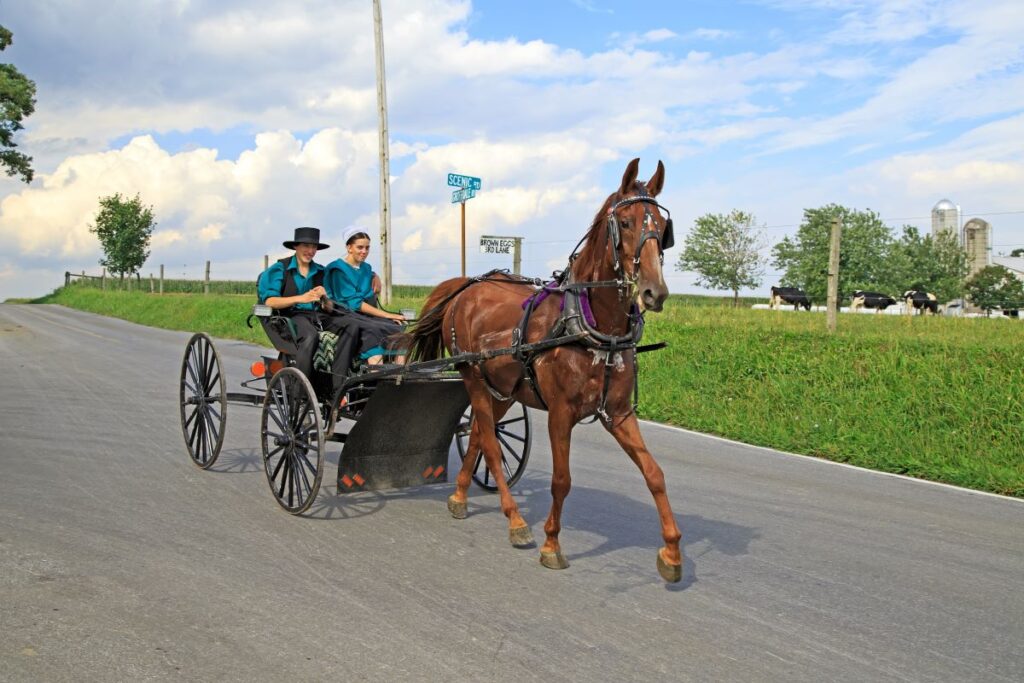
The Beachy Amish Mennonite Community near Montezuma, Georgia, is one of the largest existing Amish-Mennonite communities in the area. Like others within the Beachy Amish Mennonite denomination, it blends elements of traditional Amish and Mennonite practices.
Way of Life
The Beachy Amish Mennonites lead a relatively simple lifestyle, though not as strict as the Old Order Amish. They often engage in agriculture and small businesses, maintaining a close-knit community structure. Modern conveniences such as electricity, cars, and telephones are typically accepted, distinguishing them from the more conservative Amish groups.
Values
Their values emphasize strong community bonds, religious devotion, and simplicity. Worship and communal activities are central to their lives, with a focus on mutual aid and support. The community places high importance on family, church attendance, and adherence to Biblical teachings.
Traditions
The Beachy Amish Mennonites maintain certain traditions that reflect their Anabaptist heritage. These include plain dress, which is modest and simple, though not as distinct as that of the Old Order Amish. They celebrate religious holidays and events with church services and community gatherings. Education is also valued, with many children attending private Mennonite schools that emphasize both academic and religious instruction.
How the Amish Enrich Georgia’s Communities
Georgia’s Amish and Mennonite communities contribute significantly to the state’s diversity and economy through their unique lifestyles and values. Rooted in traditions of self-reliance and sustainability, these communities bring a distinctive blend of economic activities and cultural practices that enrich their local areas.
Economic Activities
In Georgia, the Amish and Mennonite populations primarily engage in agriculture, which remains the backbone of their economic contributions. They are known for running large, family-operated farms and producing a wide array of highly valued goods both within and outside their communities. These include organic fruits and vegetables, dairy products, and handcrafted furniture—each renowned for its quality and sustainability.
Cultural and Religious Practices
Culturally, the Amish in Georgia adhere to a lifestyle emphasizing simplicity and faith. Their day-to-day practices are governed by a set of spiritual beliefs that prioritize community life and separation from the conveniences of modern technology. For instance, while many communities around the country increasingly adopt modern tools, many of Georgia’s Amish still travel by horse and buggy and avoid technologies such as television and the internet.
Their religious services, which are held in homes rather than traditional churches, and their schools, which educate children up to the eighth grade, are integral to maintaining the foundation of their community. These practices reinforce their faith and foster a healthy sense of identity and cohesion among members.
Moreover, the presence of the Amish and Mennonites adds a rich cultural layer to the local Georgian landscape. Their existence attracts tourists and those interested in their way of life.
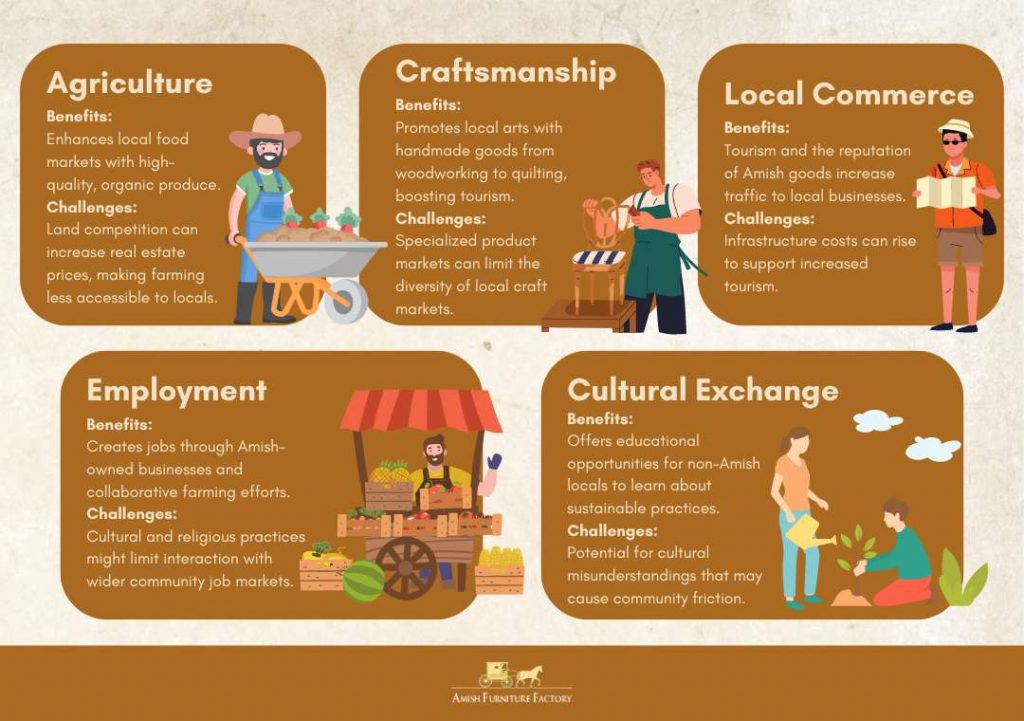
Impact on Local Tourism
The Amish communities in Georgia, with their unique lifestyle and firm commitment to tradition, have become a significant attraction for tourists seeking one-of-a-kind experiences. They offer a glimpse into a way of living that many find fascinating and enriching, contributing to Georgia’s tourism industry. Tourists are often drawn to the peace and authenticity these communities demonstrate, which significantly contrasts with the hustle and bustle of modern city life.
This influx of visitors benefits local economies, as tourists spend on tours, Amish-made goods, dining, and lodging. The Amish lifestyle appeals to eco-conscious travelers interested in sustainability and green living, as well as those fascinated by traditional, labor-intensive practices, making them attractive for both cultural tourism and eco-tourism.
Types of Tourism Activities and Experiences Offered by the Amish
The activities and experiences available are diverse and cater to various interests. Here are some of the most popular attractions:
- Farm and Workshop Tours: Visitors can tour Amish farms and workshops to see firsthand how they operate without modern technology. These tours often include woodworking, quilting, and other Amish crafts demonstrations.
- Amish Market Days: On market days, tourists can purchase Amish goods directly from the source. These markets feature everything the Amish residents make -from handmade furniture and crafts to fresh produce and baked goods.
- Carriage Rides/Buggy Rides: Many visitors take carriage/buggy rides through the countryside for the Amish experience. These rides offer a more intimate look at the Amish life and the scenic beauty of Georgia’s rural areas.
- Homestay Experiences: Some Amish communities offer homestay experiences, where tourists can live alongside an Amish family for a few days. This experience provides a more personal understanding of the Amish’s daily life, including meals and chores.
- Amish Furniture Expos: These furniture expos are a must-see for furniture enthusiasts. They showcase a wide array of handcrafted Amish furniture, highlighting the exceptional craftsmanship and quality of Amish woodwork. Visitors can explore various styles and designs, gaining insights into the traditional techniques used.
Visiting Amish Communities in Georgia: Tips for Visitors
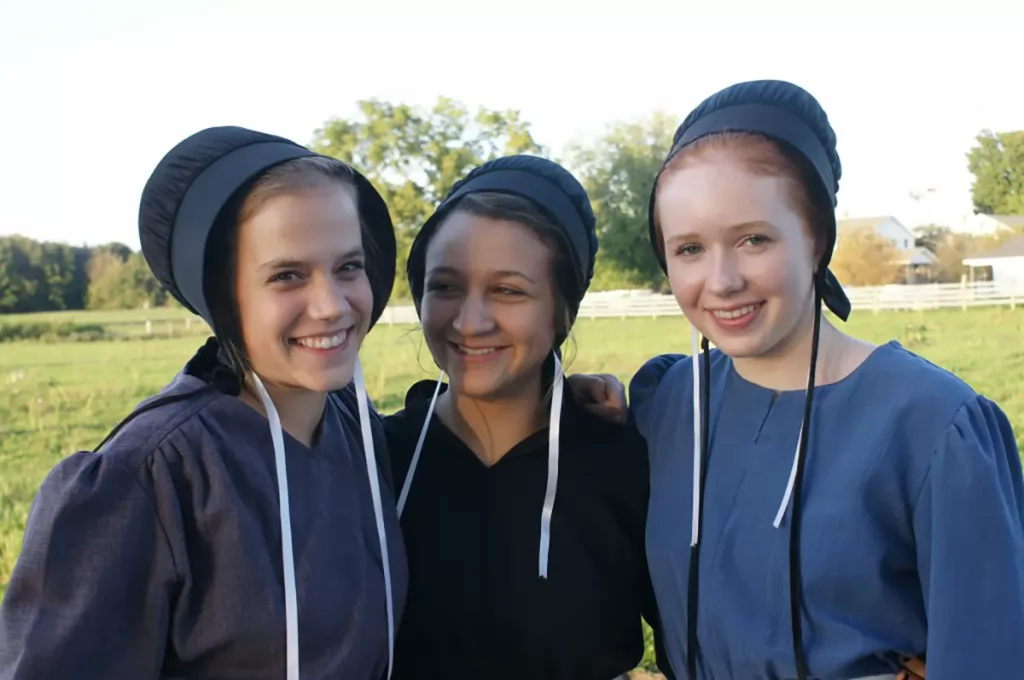
Visiting the tranquil and tradition-rich Amish communities in Georgia can be an enlightening experience. However, you must take a careful approach to appreciate and engage with them.
Here are some insights and tips to make your first-time visit to the Amish community more meaningful.
1. Do Your Research
Before you visit, take some time to learn about the Amish and their beliefs. Understanding their values and norms can help you interact more respectfully and meaningfully.
2. Dress Appropriately
Modesty is the most fundamental principle of Amish communities. When planning your visit, choose conservative clothing that covers shoulders and knees. Dressing conservatively helps prevent discomfort while interacting with community members.
3. Photography Etiquette
As a general rule of many Amish communities, taking photographs of the Amish people is strictly prohibited. Always ask for permission before taking photos, and respect any request not to use your camera in certain areas or situations.
4. Support Amish Businesses
One of the best ways to respect and contribute to the communities is by purchasing their goods. Whether handcrafted furniture, homemade baked goods, or farm produce, buying from Amish artisans supports their livelihood and lets you enjoy high-quality, sustainable products.
5. Keep Technology to a Minimum
While visiting, try to minimize your use of modern technology in public spaces, especially mobile phones. This sensitivity to their preferences helps maintain peace.
6. Be Conscious of Travel Arrangements
Many Amish communities are located off the main highways and may not be signposted in the way that you expect. Plan your route, and consider that GPS might not always be reliable in these rural settings.
7. Participate in Guided Tours
If available, participating in a guided tour can offer a deeper understanding of the Amish life. These tours are often led by individuals who have cultivated relationships with the community and can share detailed knowledge not available to casual visitors.
8. Respect Religious Practices
The Amish are deeply religious, and their routines and schedules often revolve around their faith. Be respectful of this, especially if visiting during religious observances or on Sundays.
Issues and Misunderstanding the Amish Face in Georgia
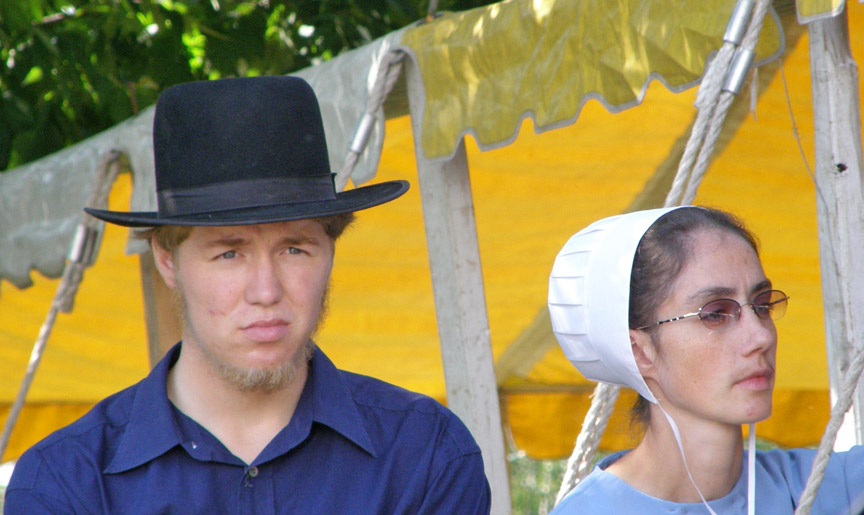
Life in Georgia presents unique challenges and misunderstandings for its Amish and Mennonite communities, mainly because of their distinctive lifestyles and beliefs.
1. Land Use and Development Pressures
One of the most pressing issues facing the Amish in Georgia is the encroachment of urban development on rural land. As cities expand, the farmlands traditionally used by the Amish are usually affected. These inevitable expansions often lead to conflicts over land use and a diminishing ability for these communities to live and farm as they have for generations.
2. Cultural Misunderstandings
The Amish lifestyle choices often lead to misunderstandings. Those who don’t have a deeper understanding of the Amish faith sometimes misinterpret their reluctance to embrace modern conveniences as backwardness or a refusal to integrate with society. These misunderstandings can foster unnecessary divisions between the Amish and non-Amish neighbors.
3. Educational Differences
Amish communities run their private schools and do not educate their children beyond the eighth grade, focusing on practical skills and community involvement instead of a high school diploma. This difference sometimes leads to misconceptions about the value of their educational system and questions from state education officials about compliance with broader educational standards.
4. Health Care Practices
The Amish approach to health care, including traditional remedies and a general hesitancy to embrace modern medical interventions, often leads to public health misconceptions. Issues arise, particularly in how these communities handle vaccinations, hospital births, and preventive care, which can be at odds with state health regulations.
5. Legal and Governmental Misunderstandings
There are also occasional legal misunderstandings, particularly concerning the Amish’s exemption from certain public services and requirements. For instance, the requirement to display bright safety triangles on their buggies is often resisted due to religious modesty, leading to legal disputes over road safety and public visibility.
Embracing Tradition: The Value of Amish Communities in Georgia
Georgia’s Amish and Mennonite communities offer more than just a peek into a lifestyle centered around tradition and simplicity; they provide a model of sustainable living that is increasingly relevant in our fast-paced modern world. Their commitment to craftsmanship and community-oriented living enriches their lives and those of the broader Georgia population.
Moreover, the presence of these groups in Georgia enhances local tourism, promotes economic stability through artisanal trades, and offers unique educational perspectives on balancing modern demands with traditional values.
Frequently Asked Questions
Are there Amish in the Appalachian Mountains?
While parts of Georgia do fall within the Appalachian region, no recorded Amish communities live in the Appalachian areas of Georgia. The Amish communities in the Appalachian range are predominantly found in states like Pennsylvania and Ohio, where they have established a presence adapted to the mountainous landscape.
What is the best Amish town to visit?
Montezuma is an excellent place in Georgia to explore Amish culture, thanks to its established Mennonite community that blends traditional practices with modern elements. For a broader experience, Lancaster County in Pennsylvania is considered the premier destination in the U.S. for Amish culture, featuring sprawling farmlands, authentic markets, and rich cultural experiences.
What is the best day to visit the Amish?
The best day to visit Amish communities is typically on a Saturday. This day is usually the busiest in market activity, where you can experience the full vibrancy of their community life, from fresh food markets to craft sales. Avoid Sundays, as this is a day of rest and religious observance for the Amish, and they do not conduct business or social visits.
